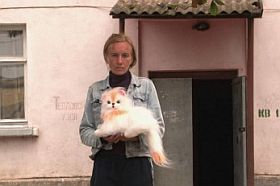Big numbers in the press release of DOK Leipzig, sent out yesterday with an announcement of the so-called official programme. 56th edition, ” a total of 88 films from 34 countries will compete in the five competition categories. While there is a particularly strong presence of traditional film production countries like Poland, France, and Great Britain, the line-up also includes countries like Bolivia, Myanmar, Nepal, or Syria. 2,240 films from 114 countries were submitted, a total of well over 3,000 films were previewed.”
And it goes on with more facts in the press release, “overall, 346 films will be screened in the various sections and Special Programmes: 187 documentaries, 116 animations, and 43 Animadoc productions. 24 among the 109 films in the official documentary film programme of the 56th edition of DOK Leipzig will be world premieres, 24 international premieres, 7 European premieres and 47 German premieres. The large percentage of prestigious names and former award winners whose films enrich the programme is a particularly positive development.”
Prestigious names… yes, there is a good spread from a classical documentary approach from Volker Koepp, who brings a new title, “In Sarmatia”, to the two Russian documentarians Vitaly Mansky and Marina Razbezhkina and to Danish master Jon Bang Carlsen’s “Just the Right Amount of Violence”, a film that has not yet had its Danish cinema release, as usual with Carlsen on his way to find new ways of exploration and introspection. Bravo also for taking Robert Kirchhoff’s “Normalization” (PHOTO) to the competititon, whereas it is a surprise that “Hilton – Here for Life” by Finnish Virpi Suutari has been chosen.
In the Young Cinema Competititon it is great, for a former Zelig Film School teacher, to find the graduation film of Yuri Mazumdar, a beautiful work from India, “Kalyug”, as well as “The Last Black Sea Pirates” by Bulgarian Svetoslav Stoyanov and “Sickfuckpeople” by Juri Rechinsky.
For me DOK Leipzig is for social and political documentaries, with films from all over the world, with a strong thematic focus, maybe more for the brain than for the heart? I will go there for some days, with pleasure, to a festival that is always very well organised in cosy Leipzig.
Side programmes, of course, take a look at the website, there are focus on Brazil, retro of Peter Liechti and much more. Let the festival director have the last word: “Documentary film today displays an extraordinary wealth of themes and amazing stylistic devices,” says Claas Danielsen. “The genre has long since left its niche to win over a wide audience.” Right he is!
http://www.dok-leipzig.de/



